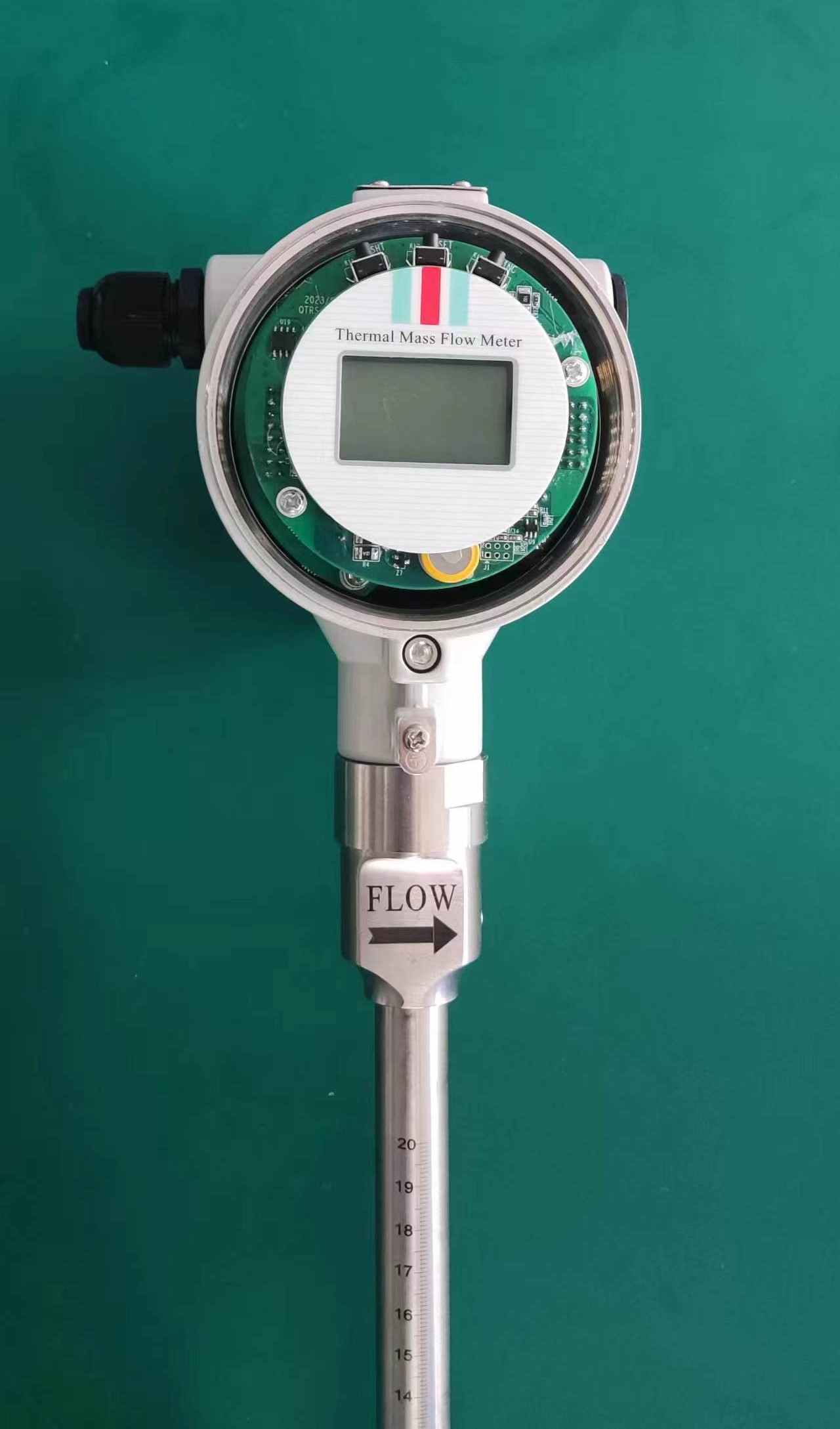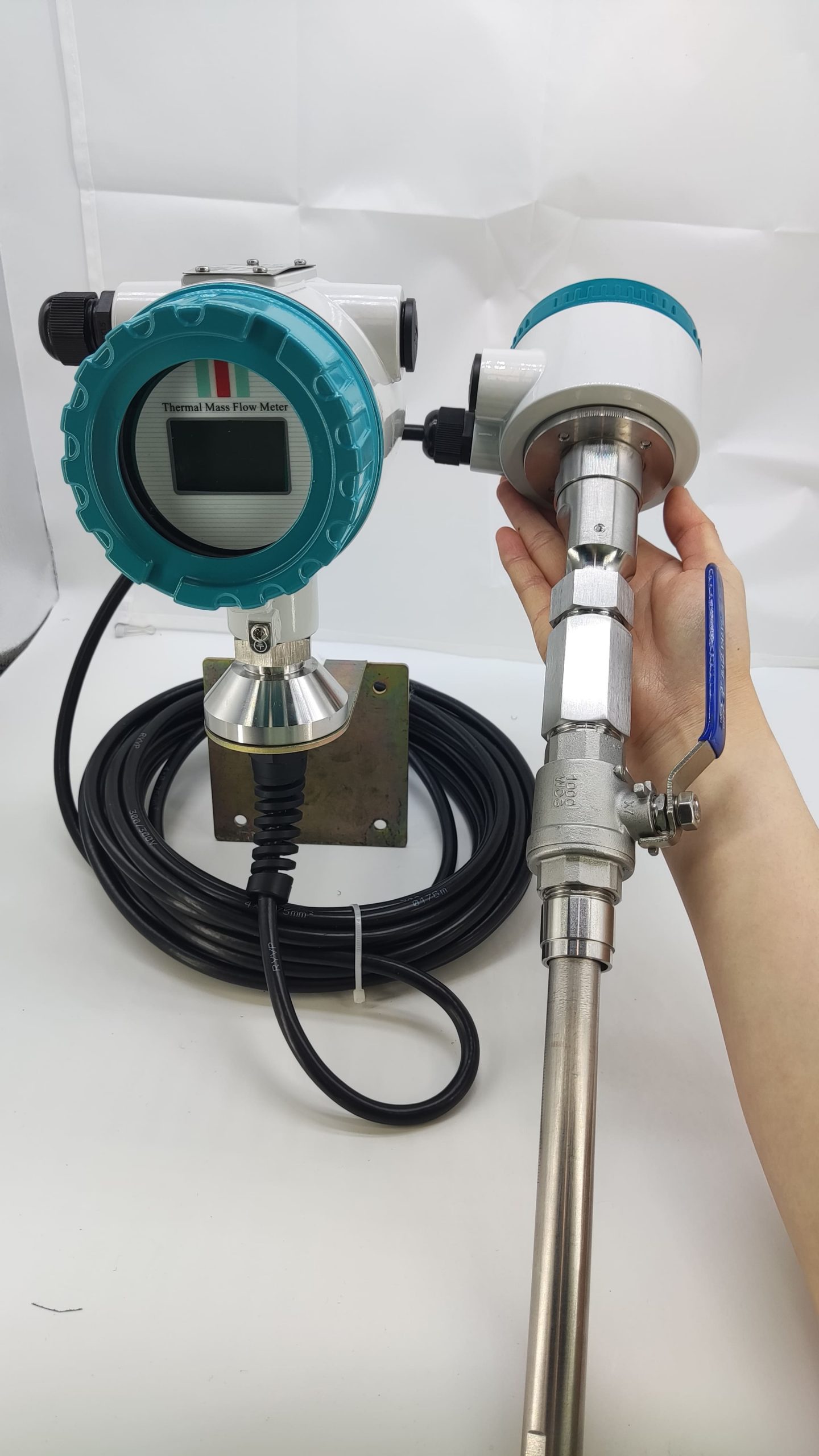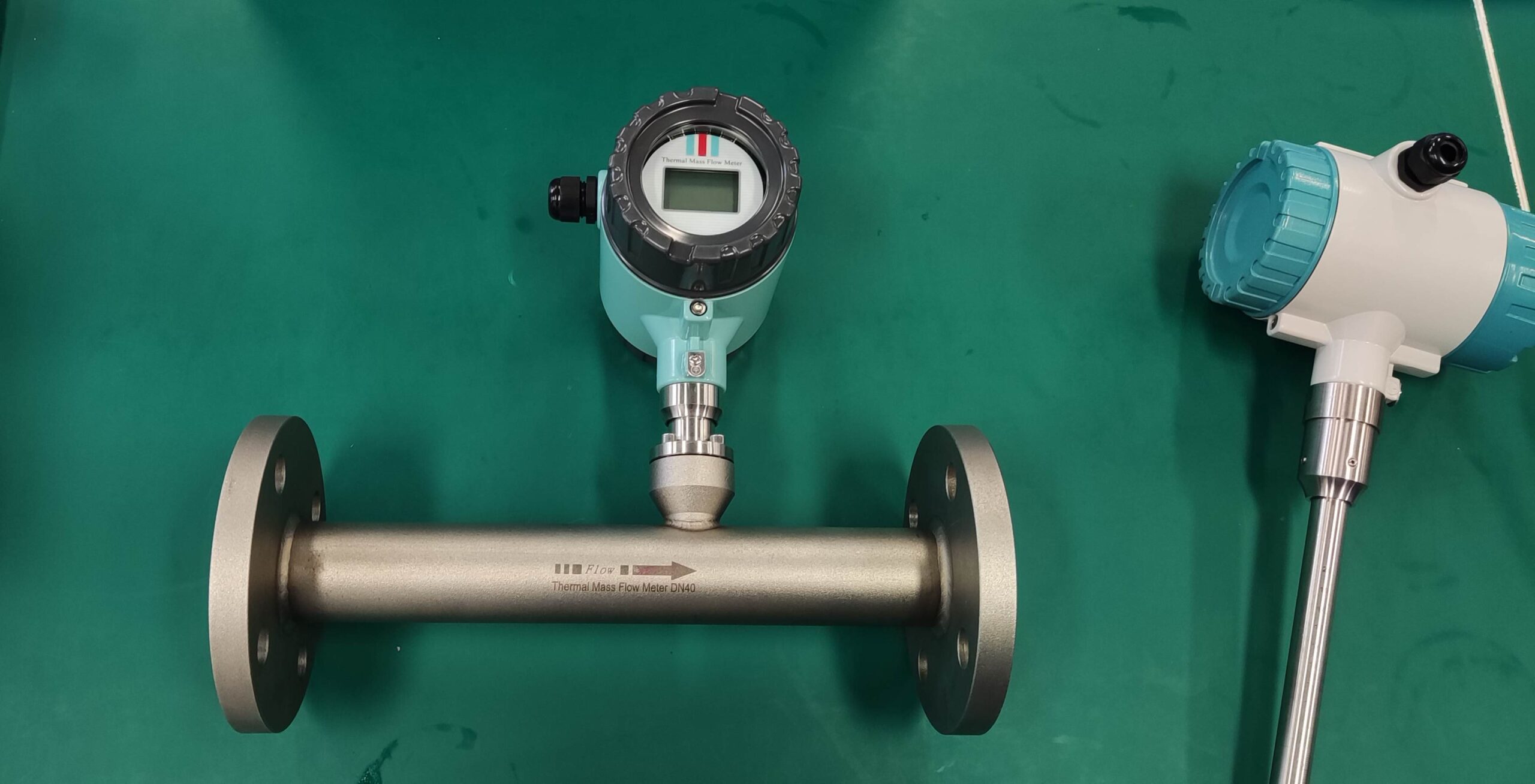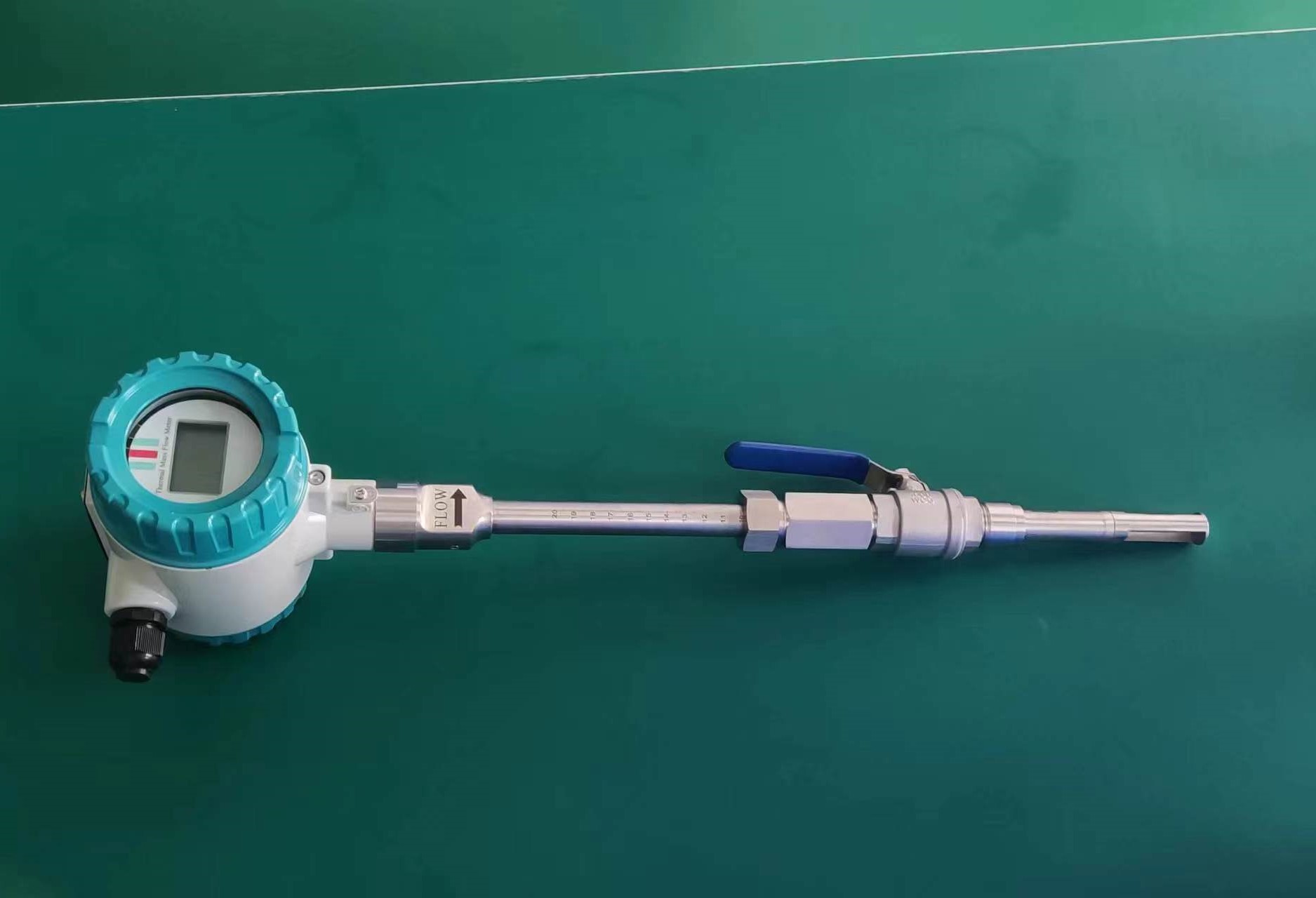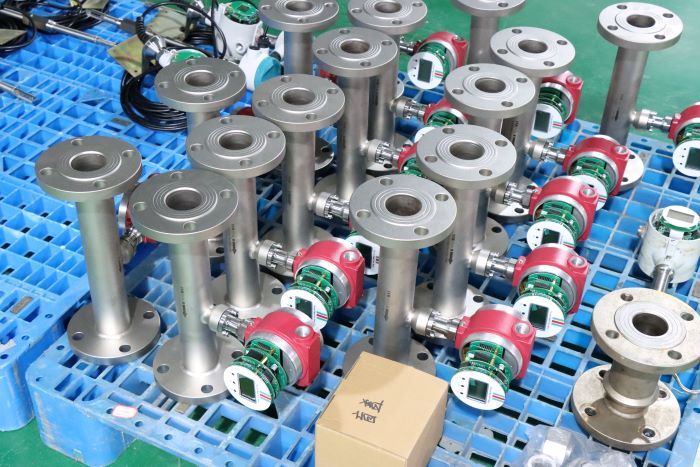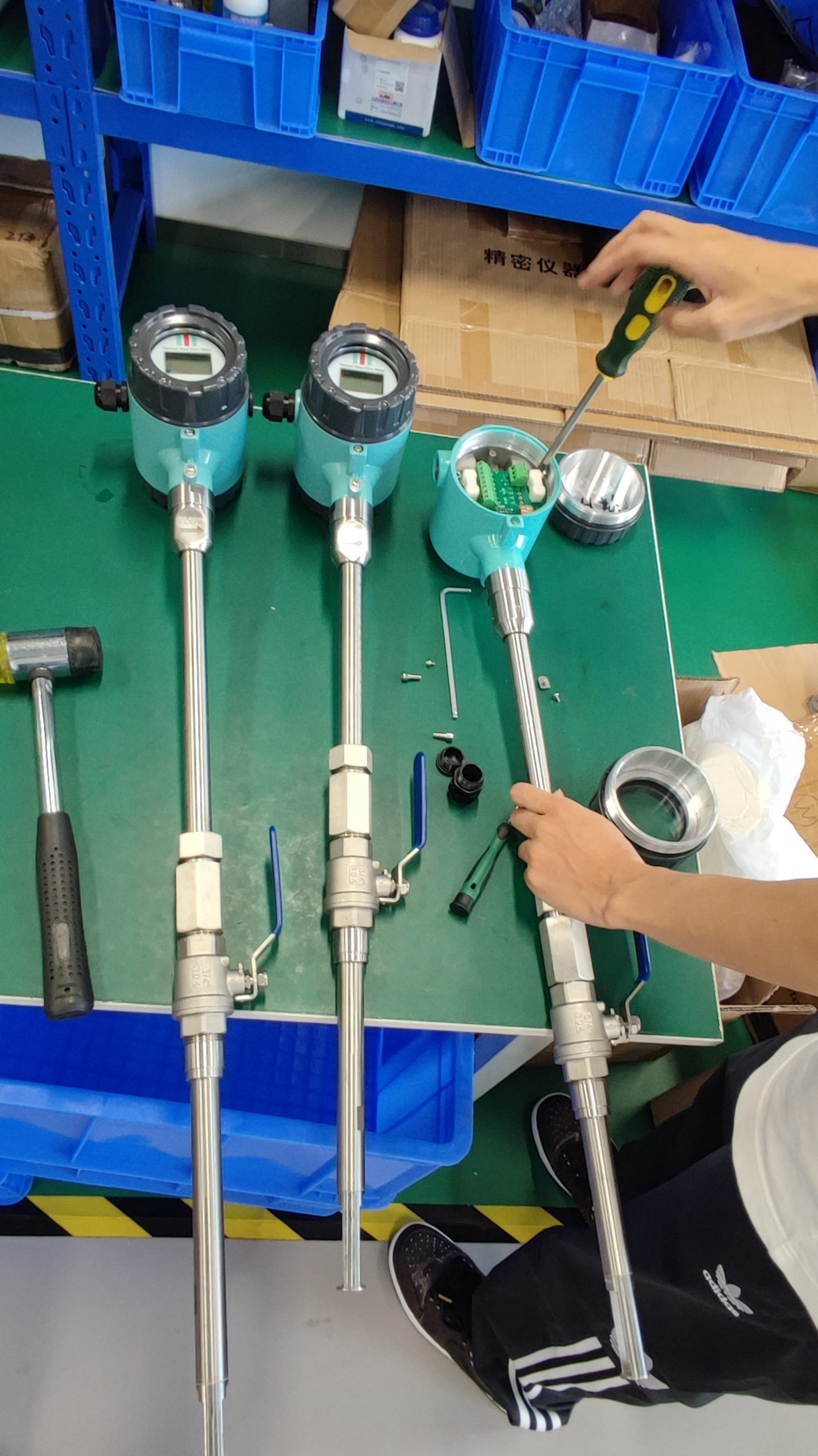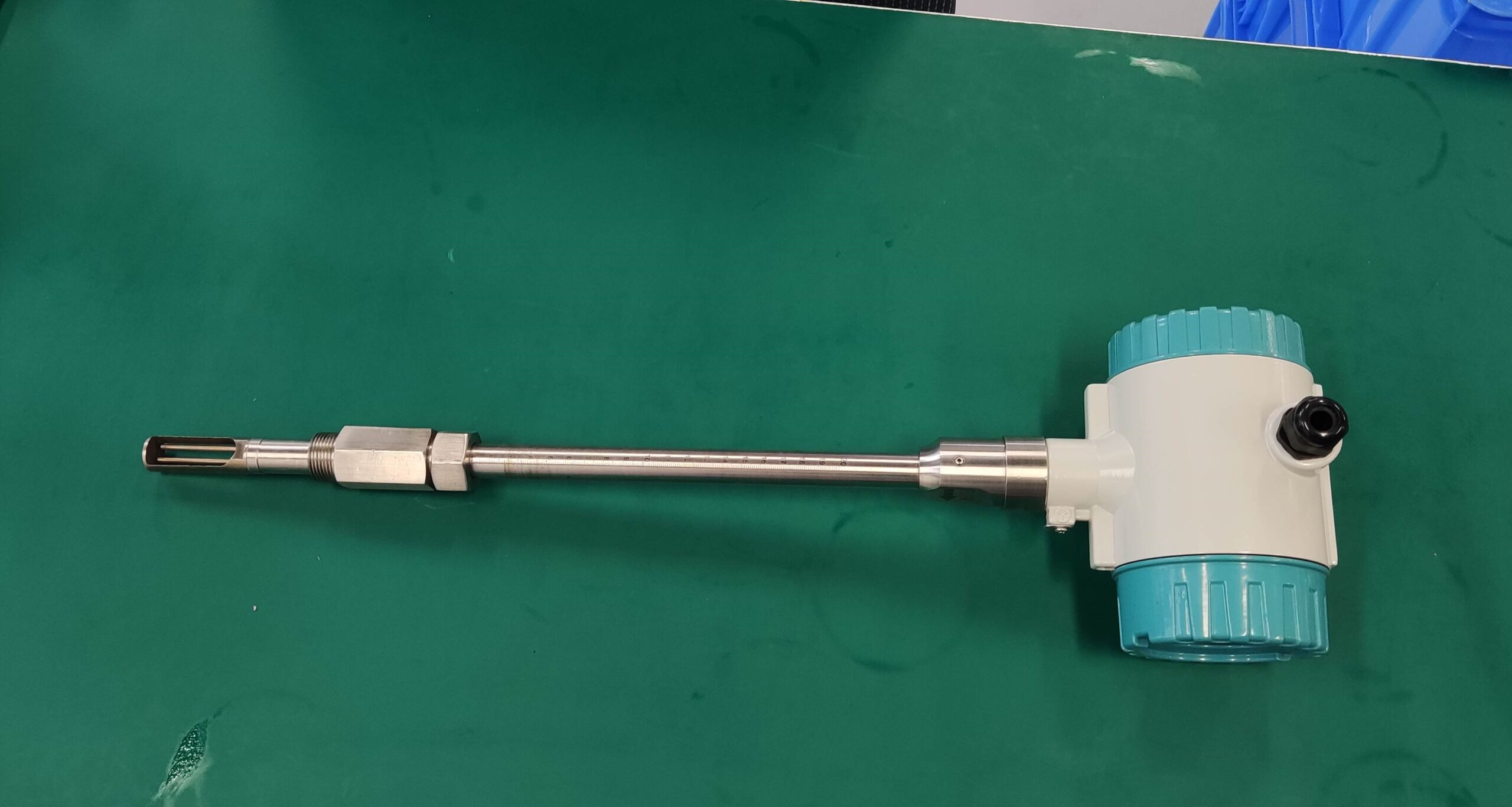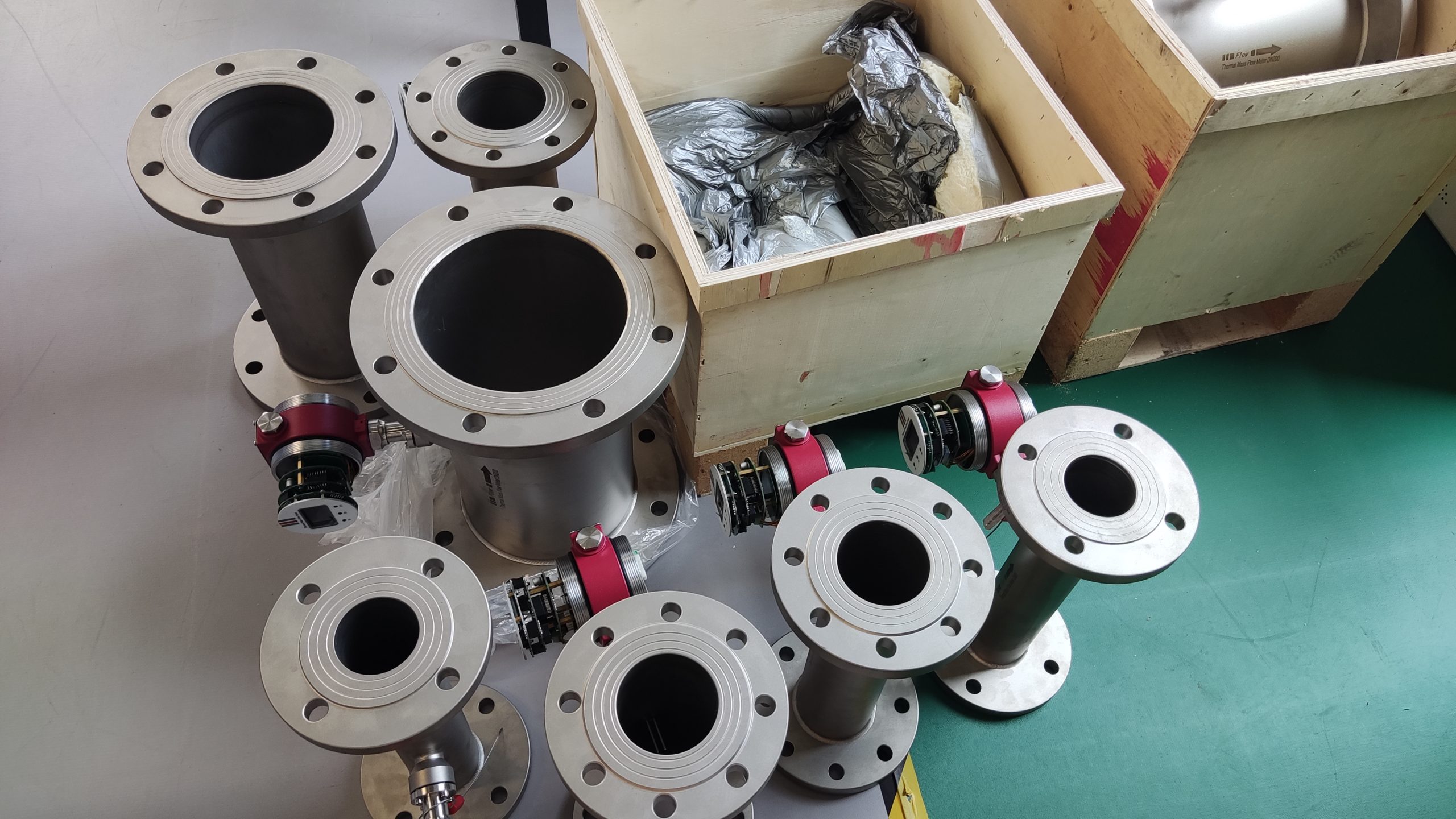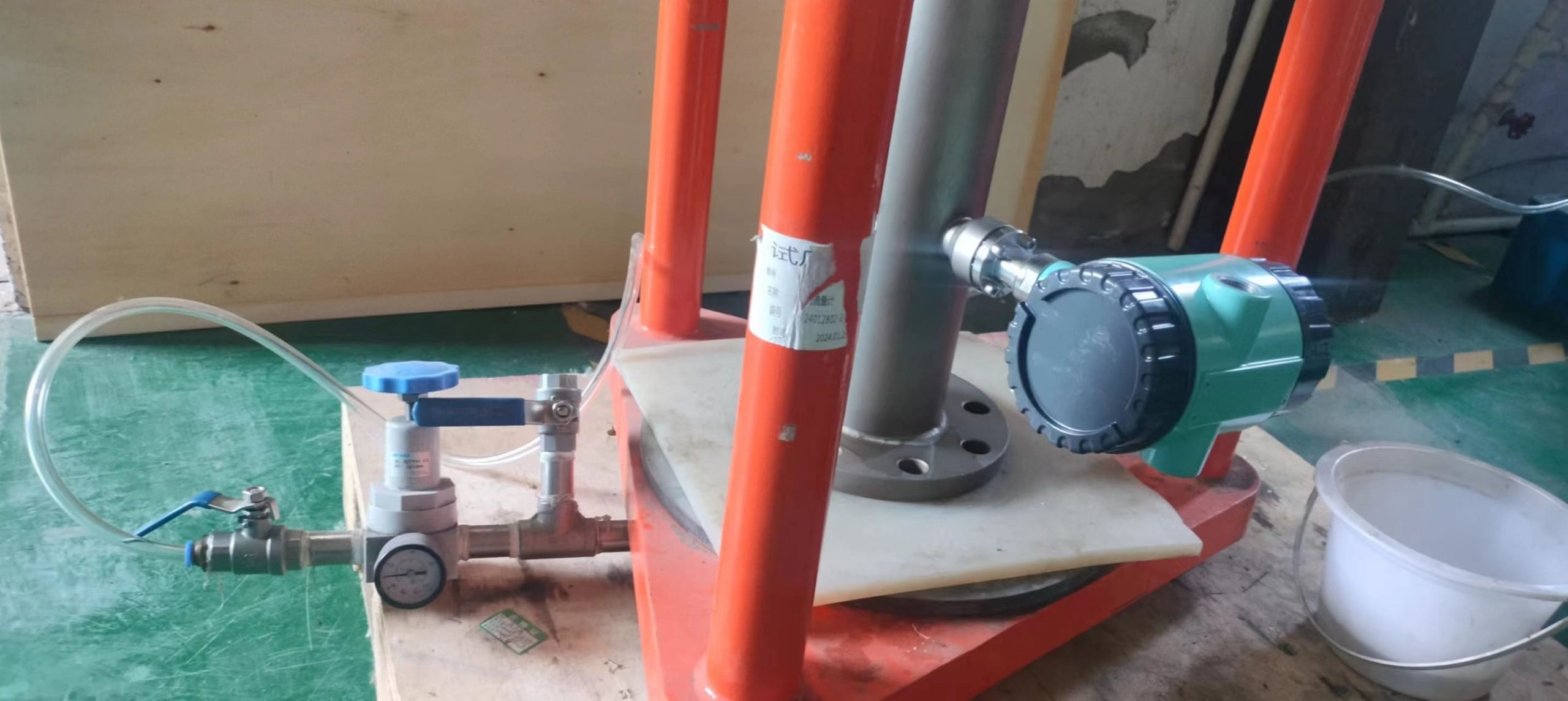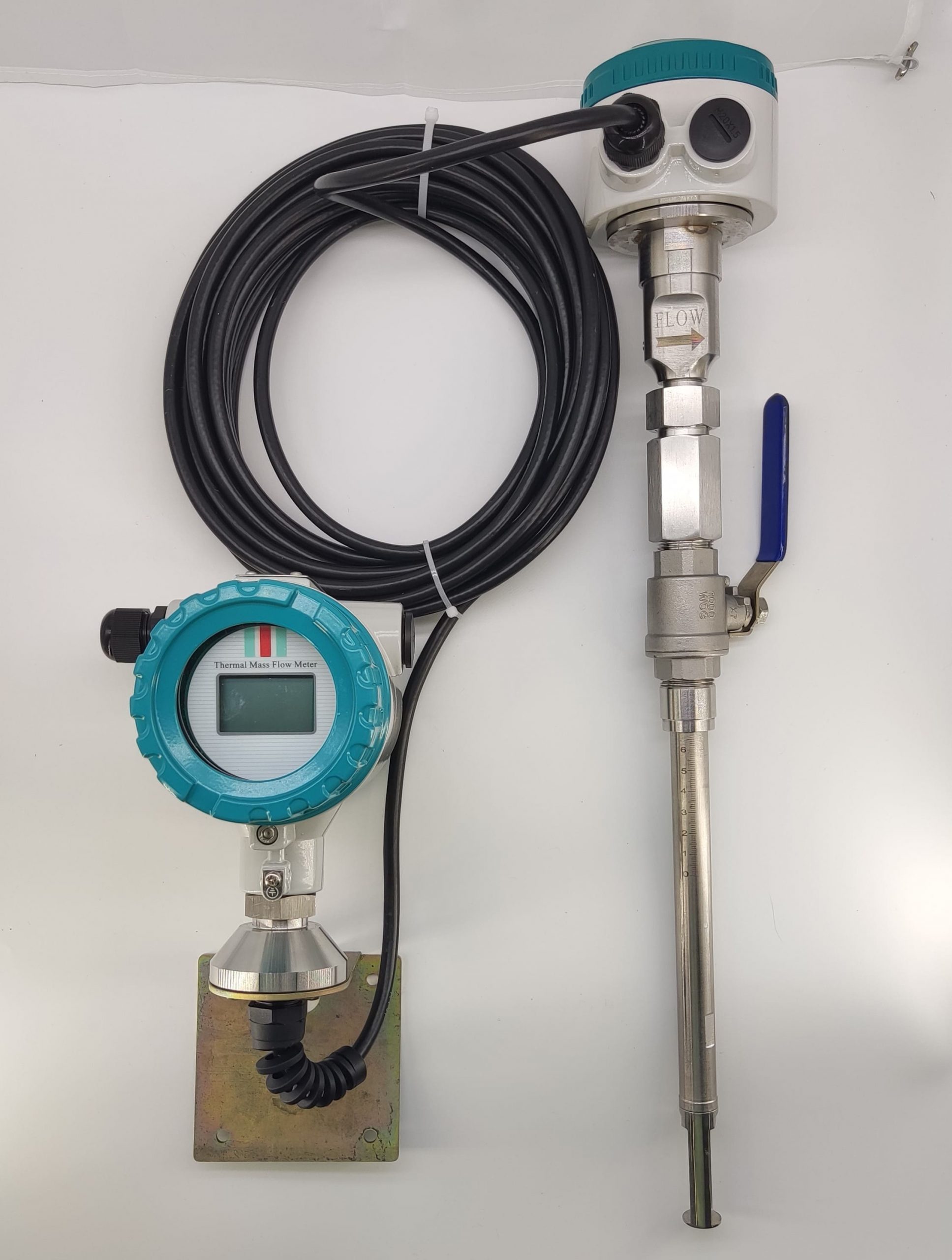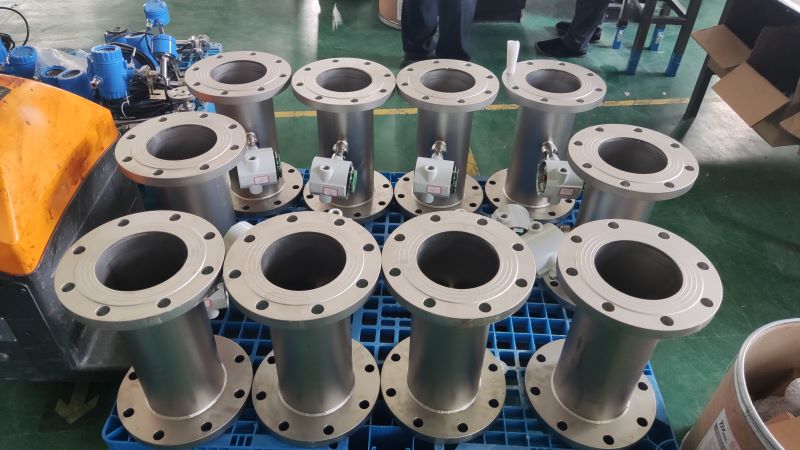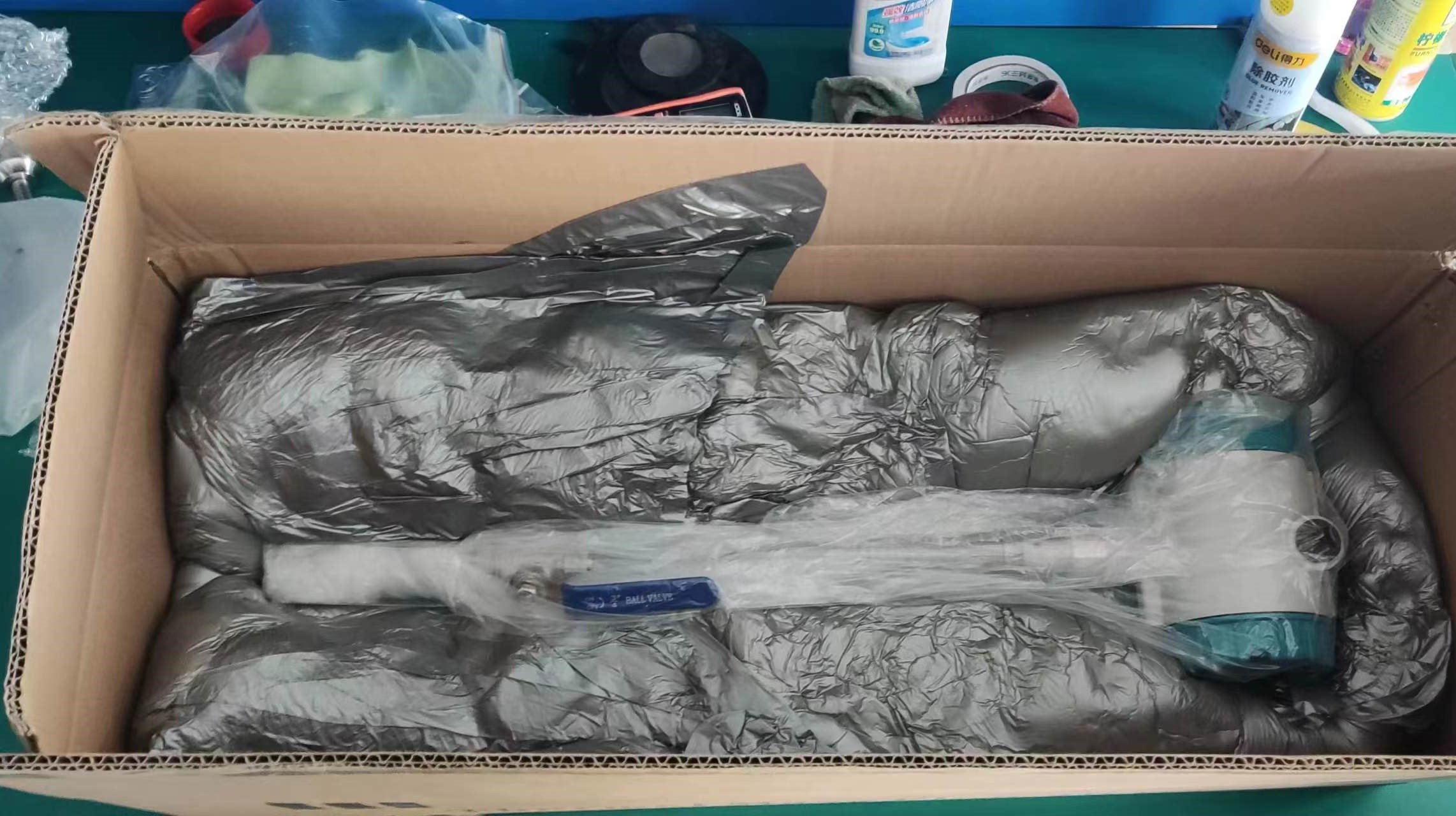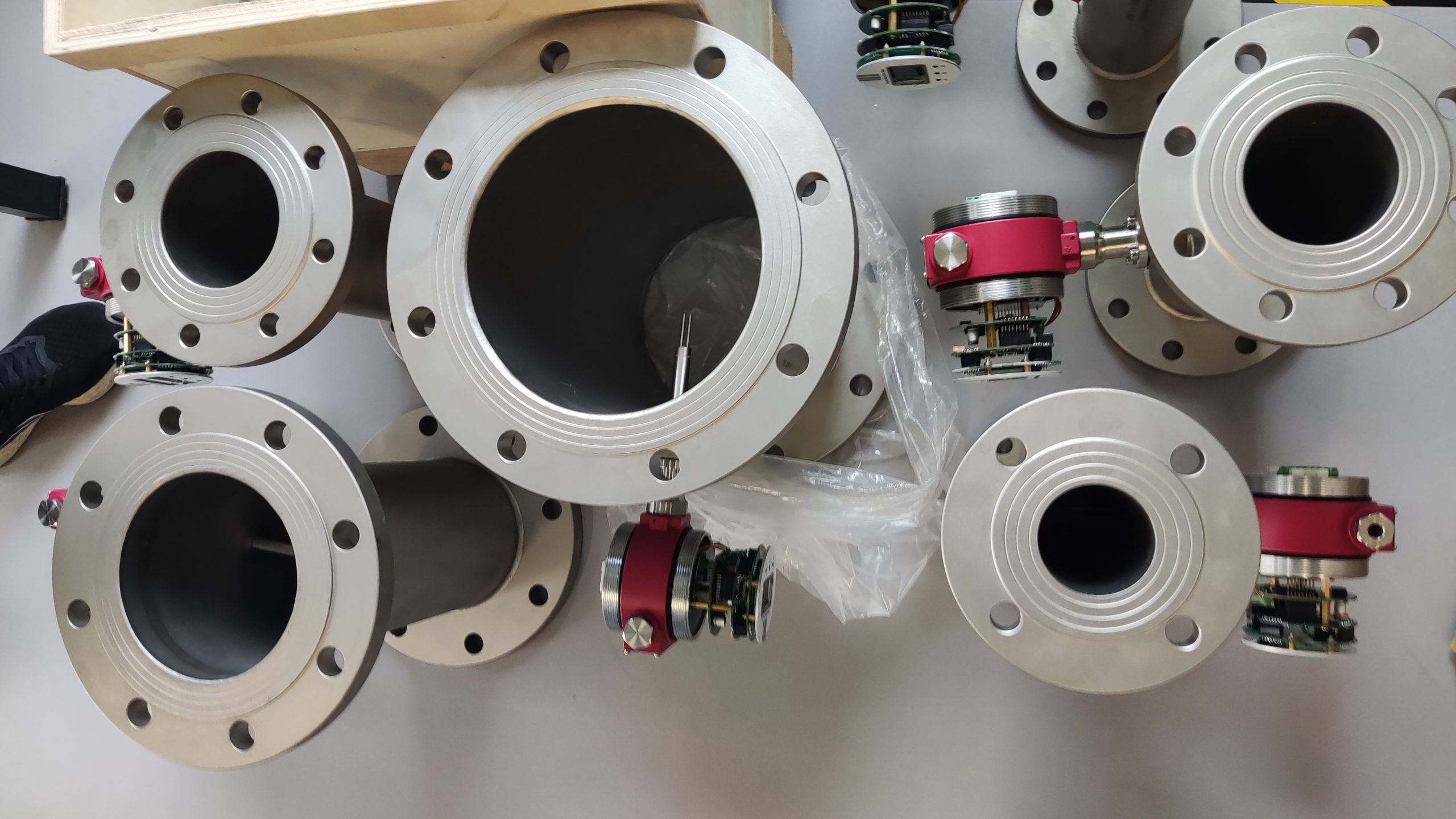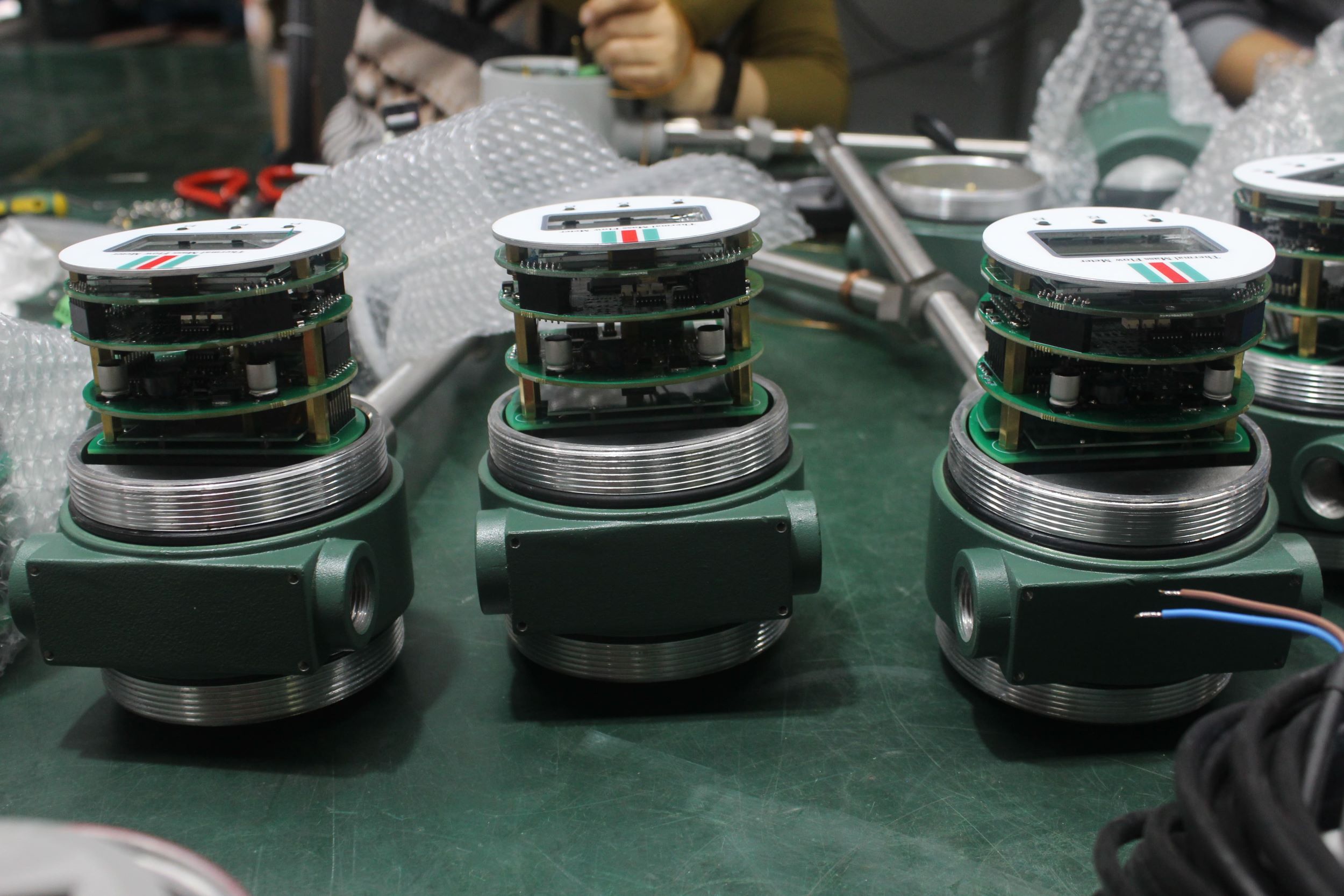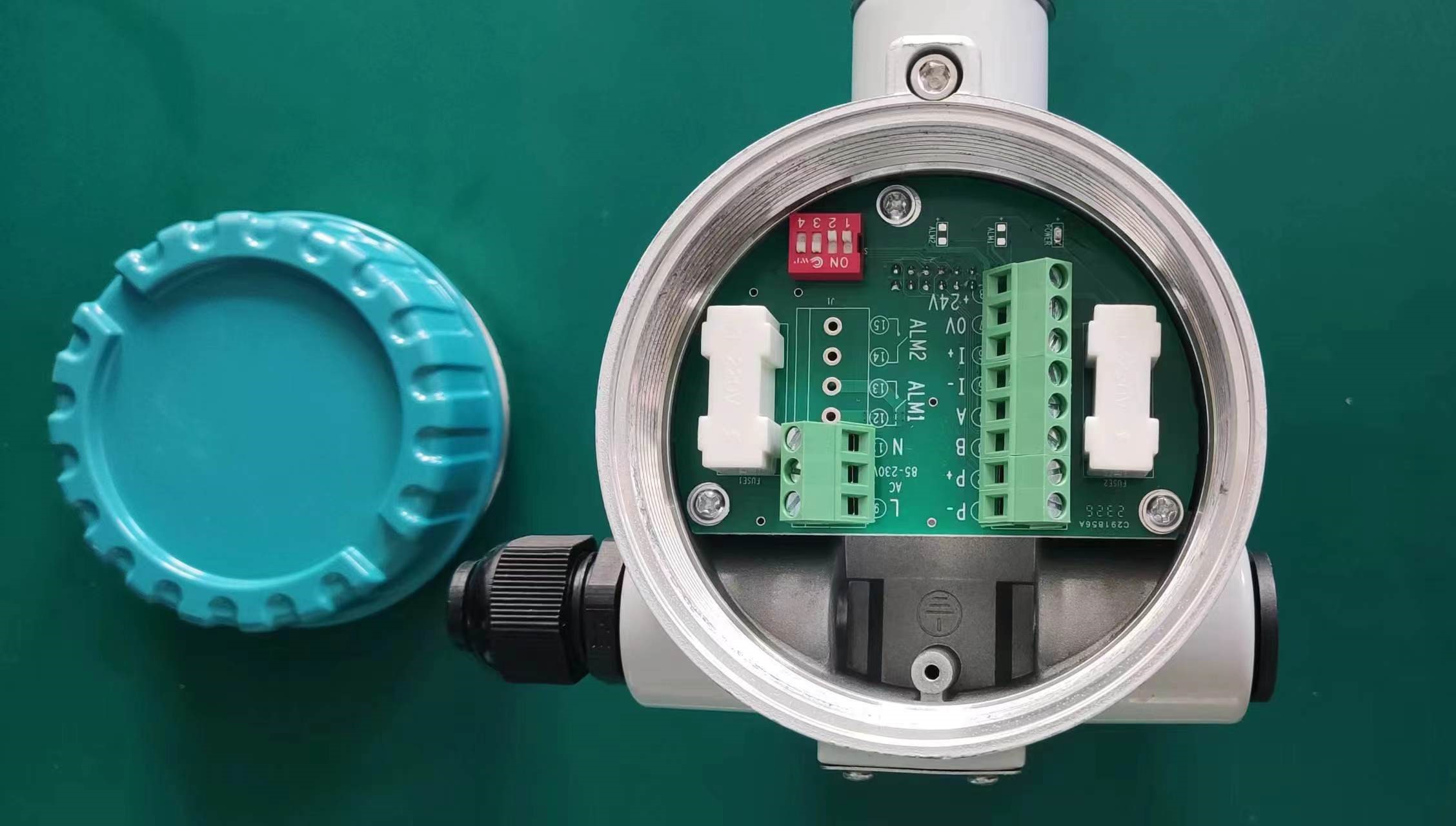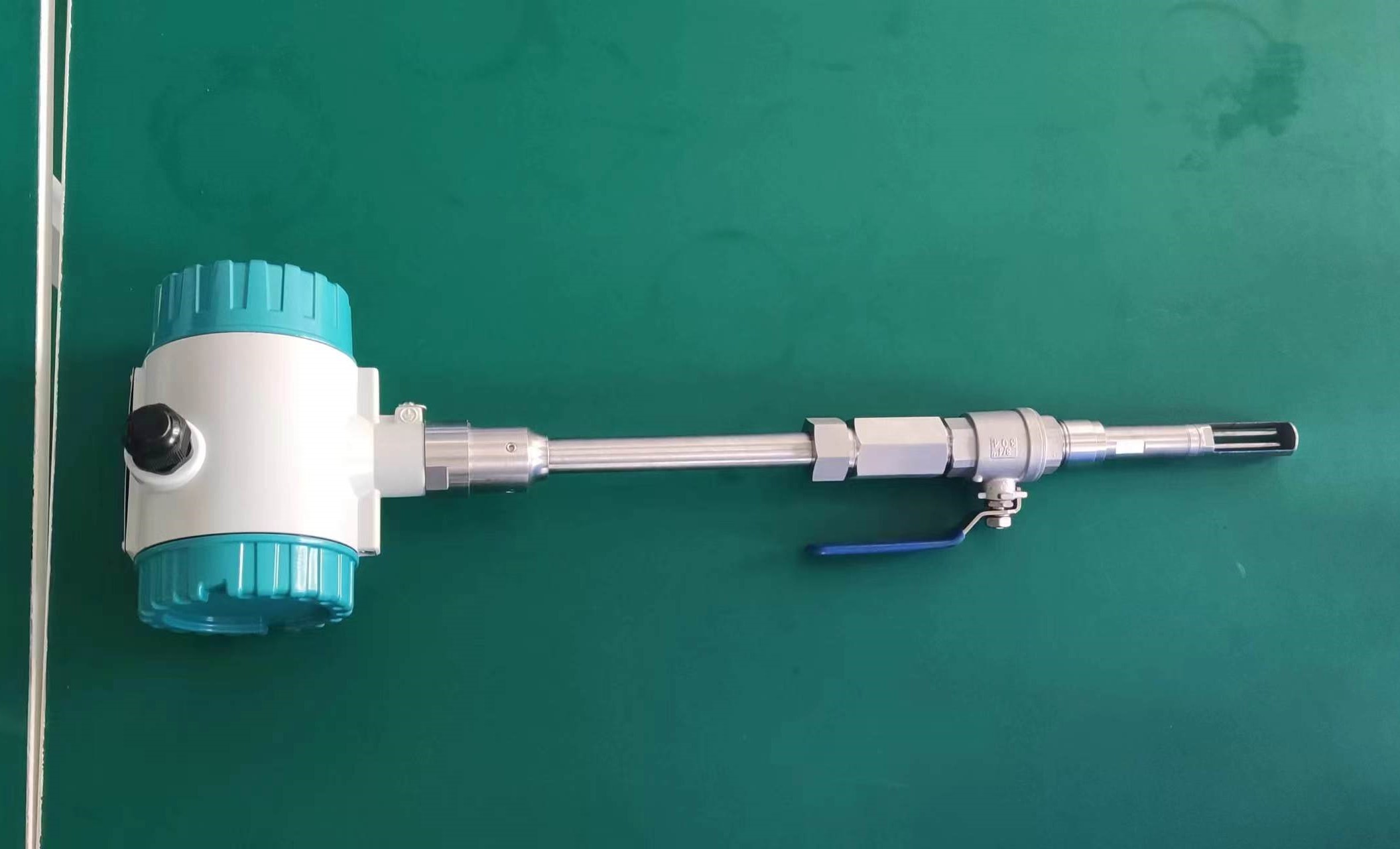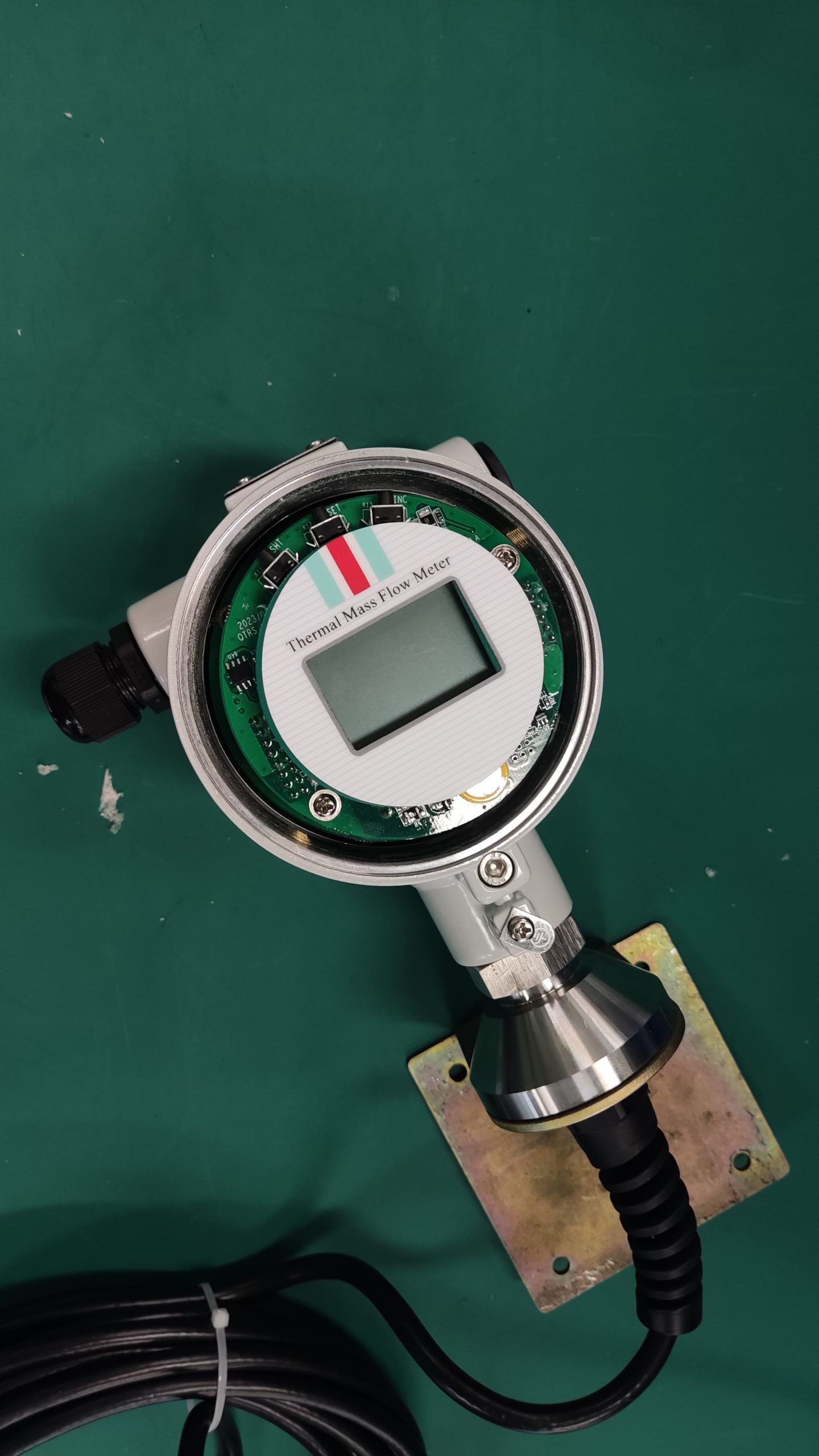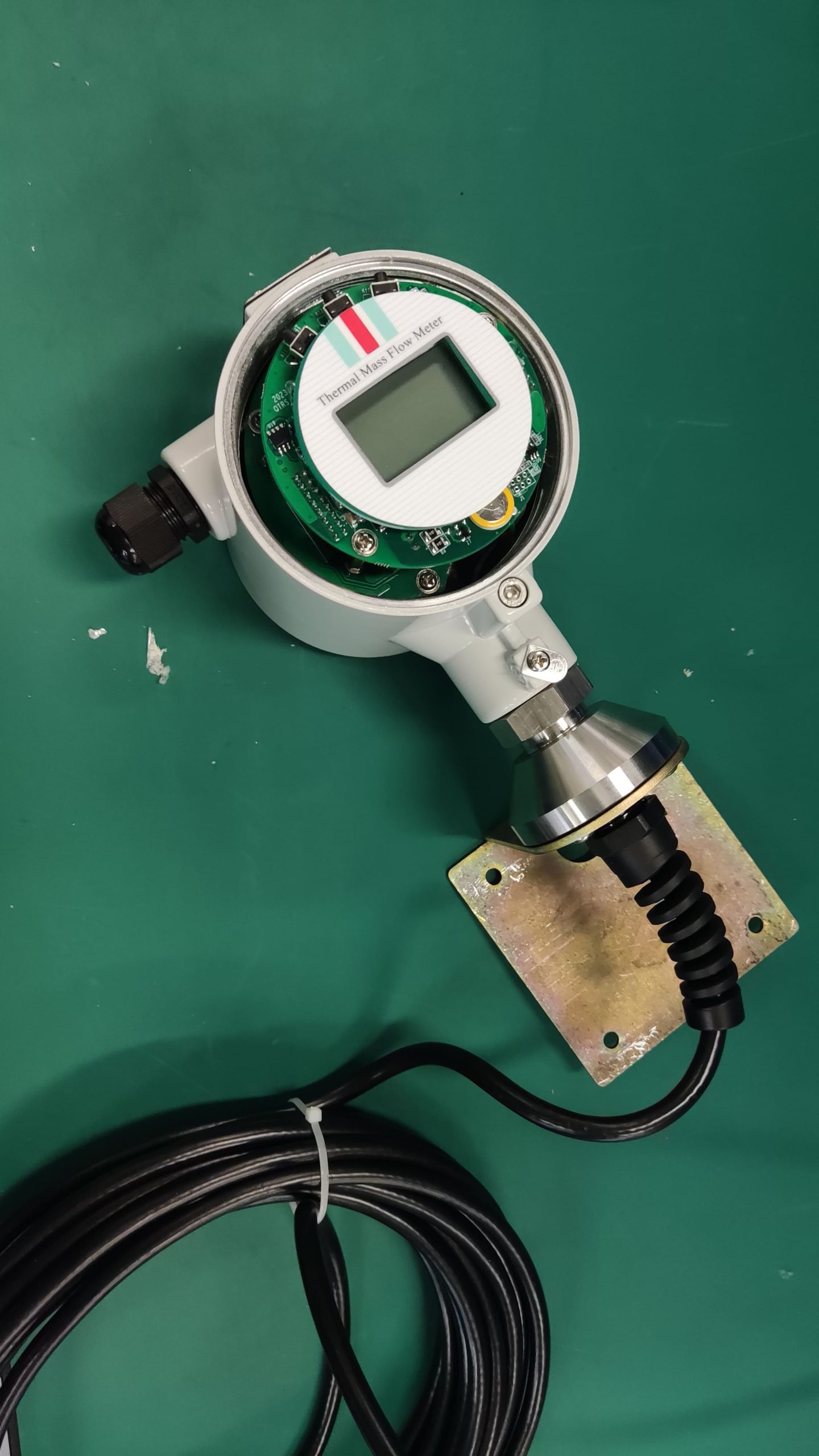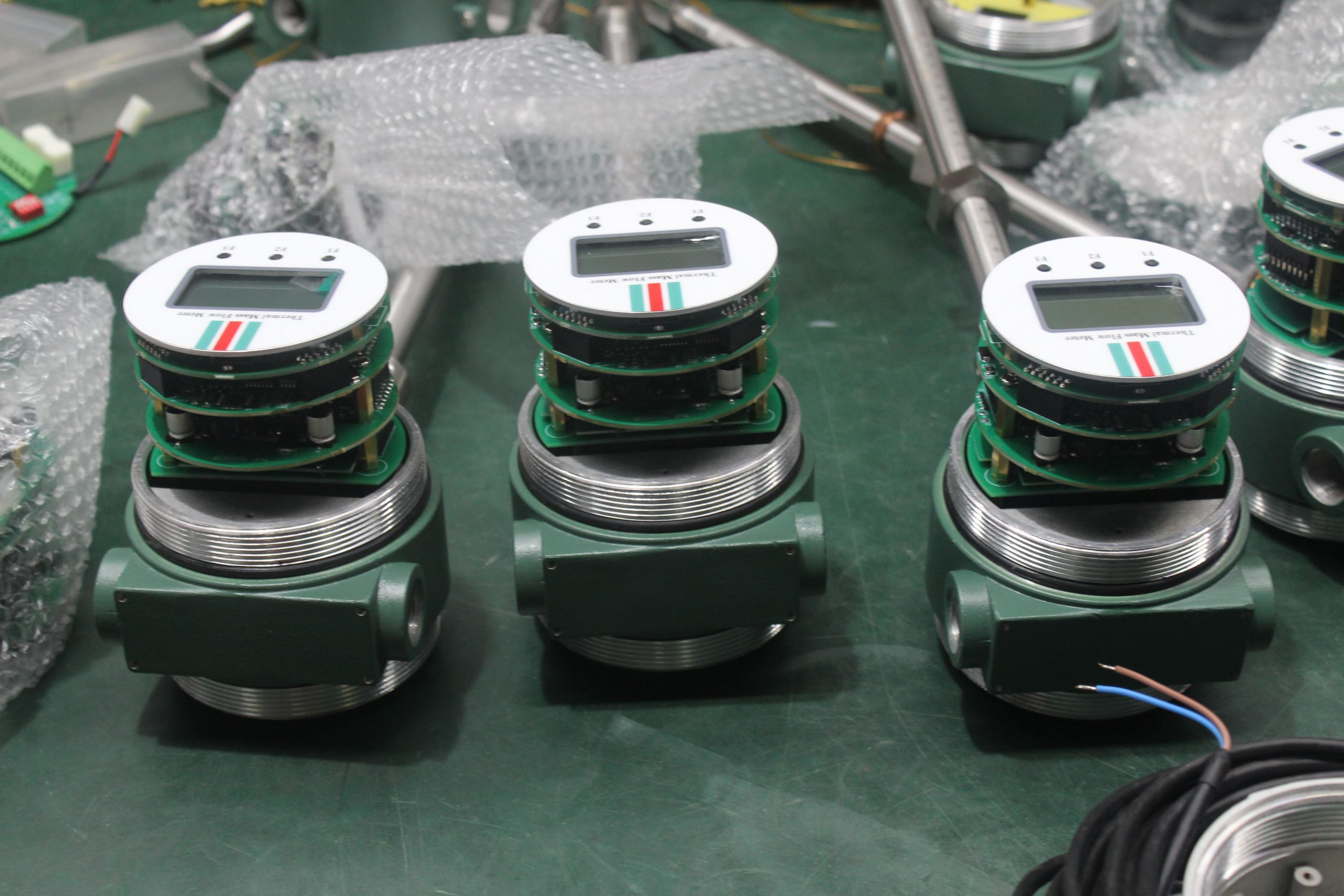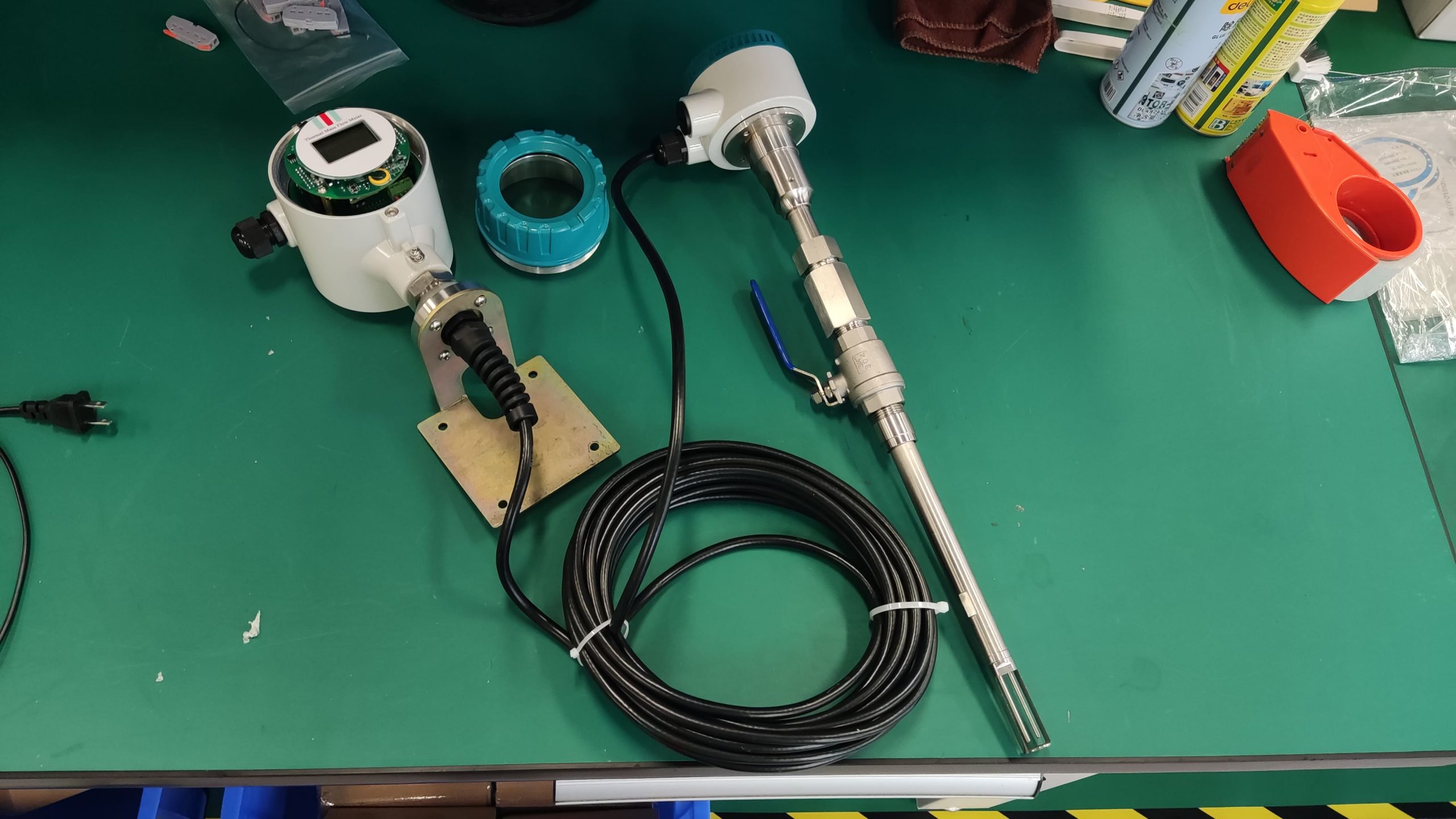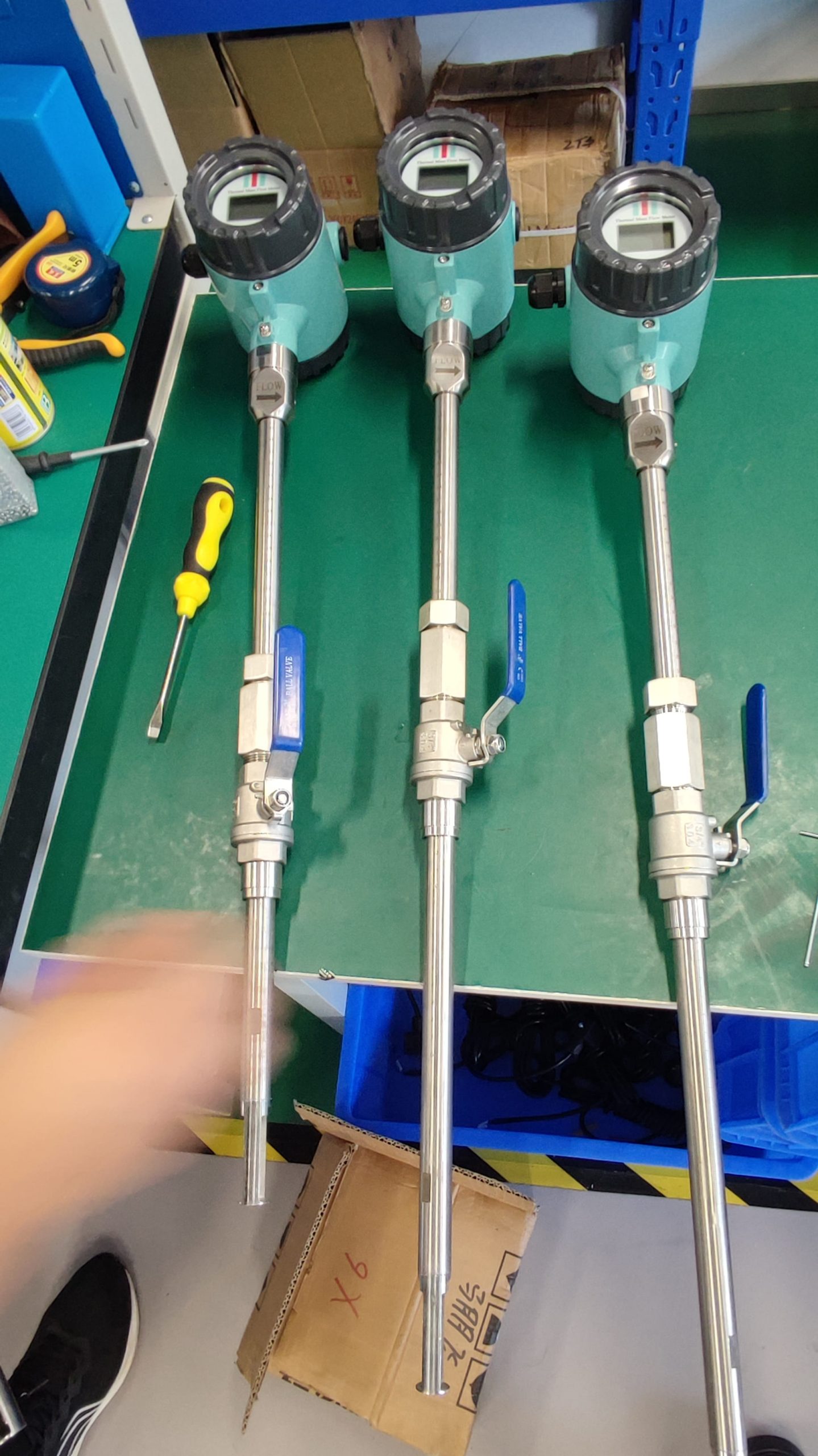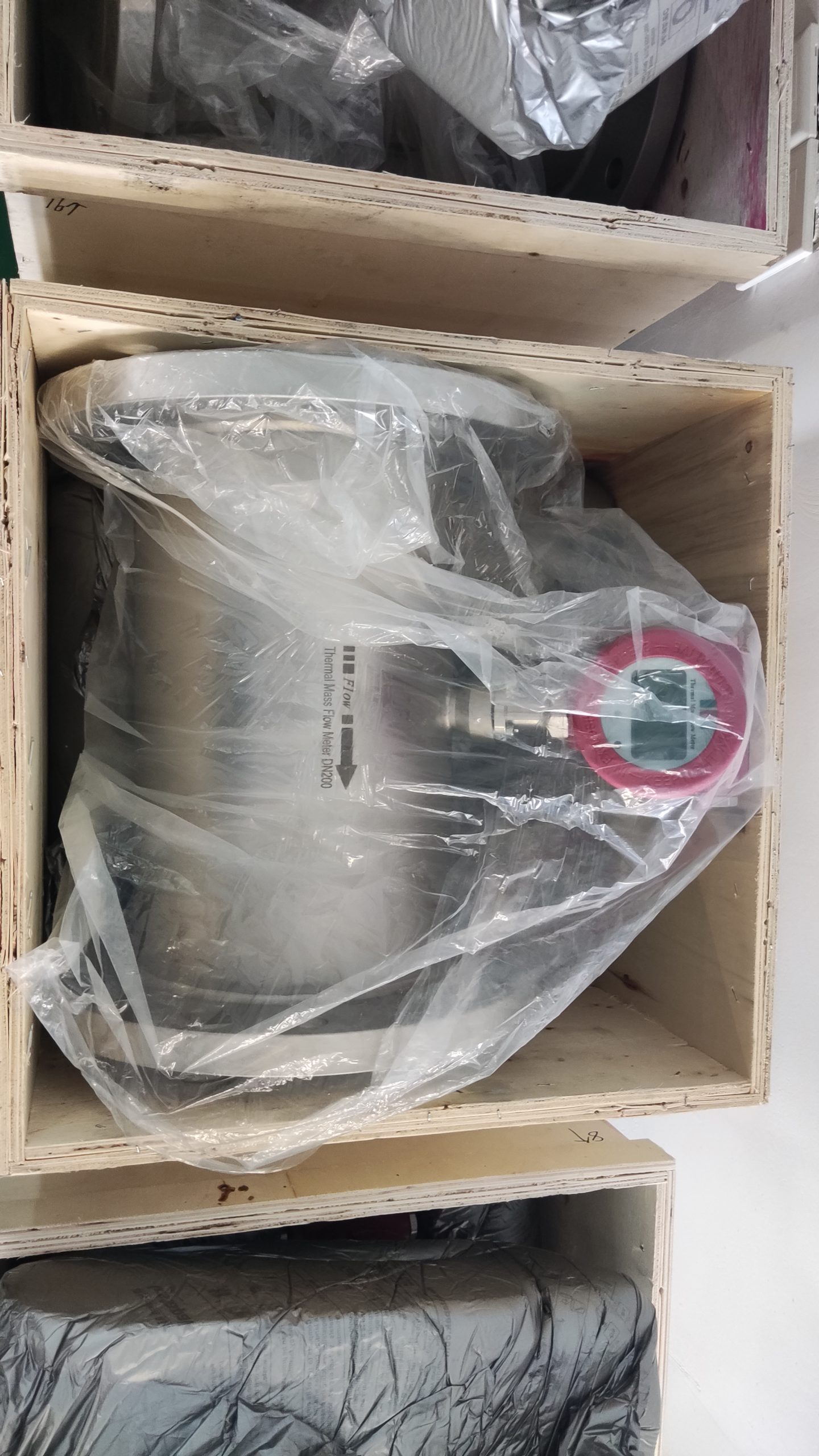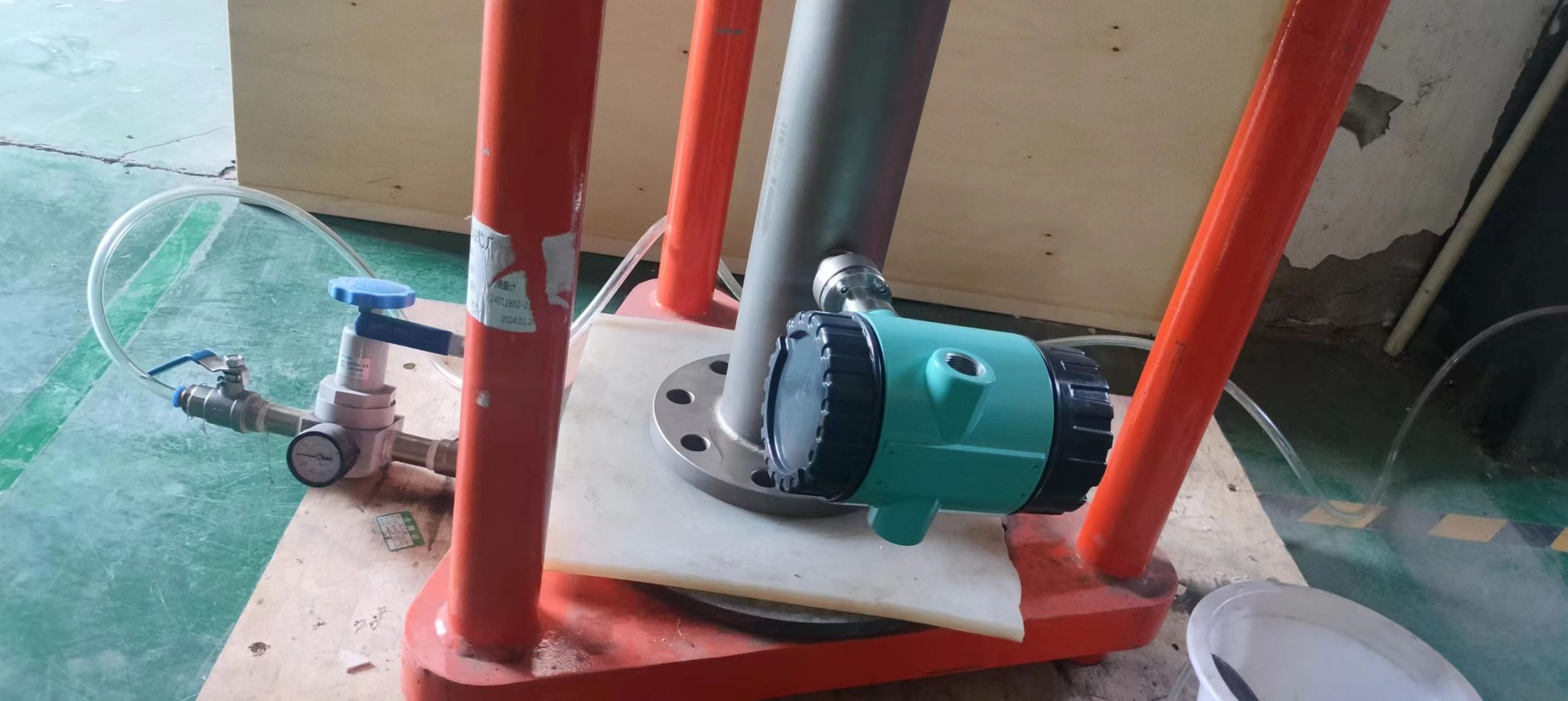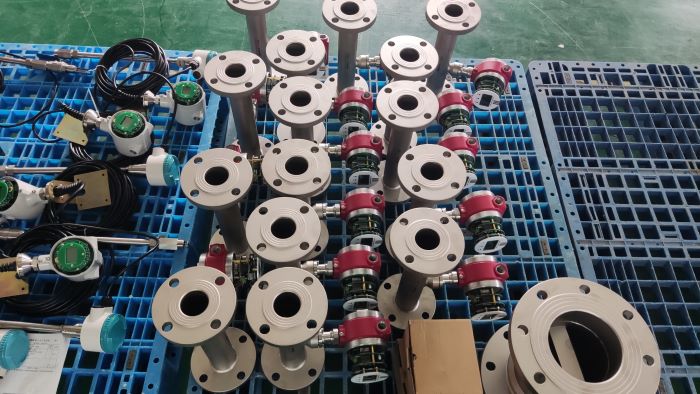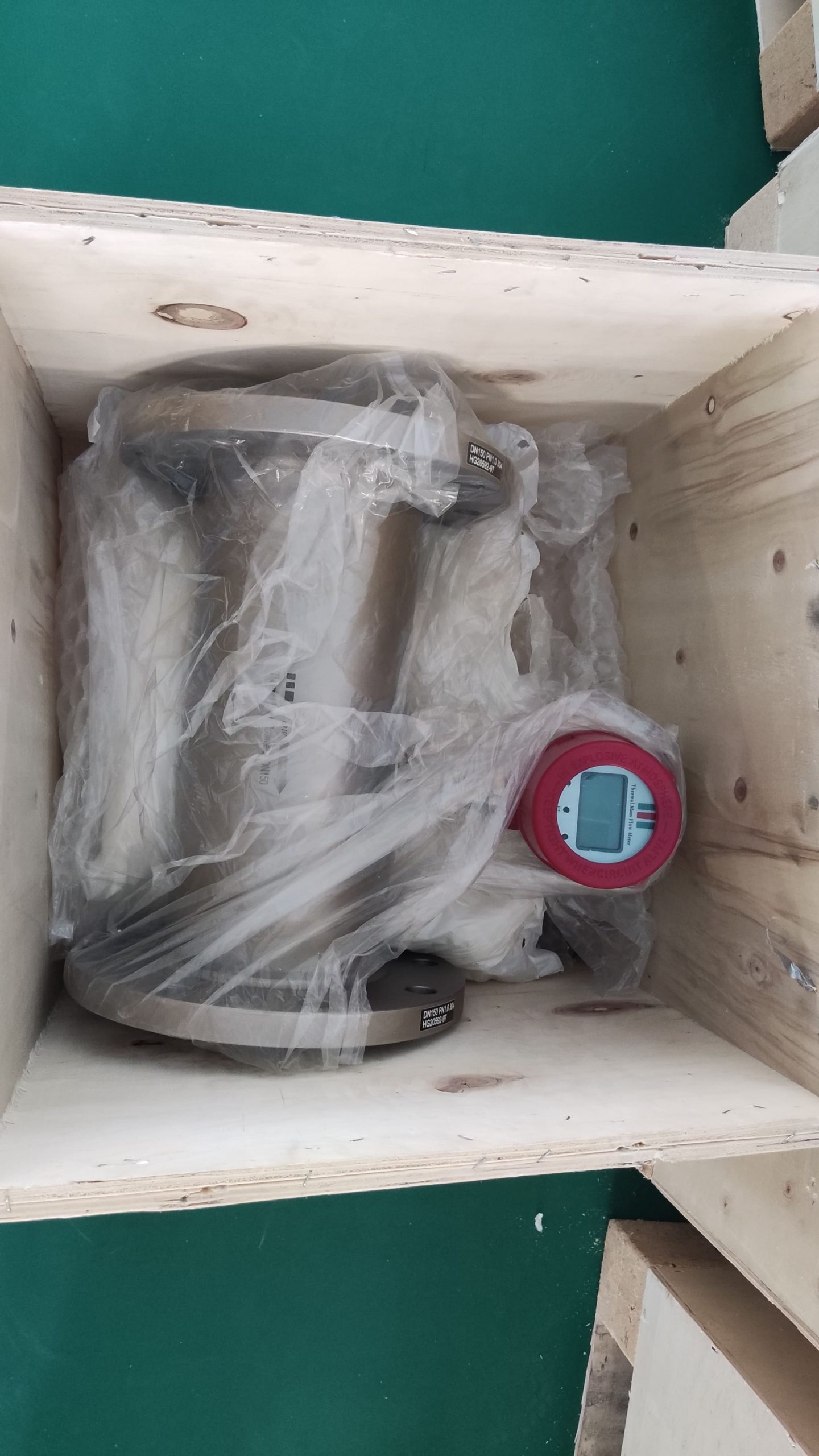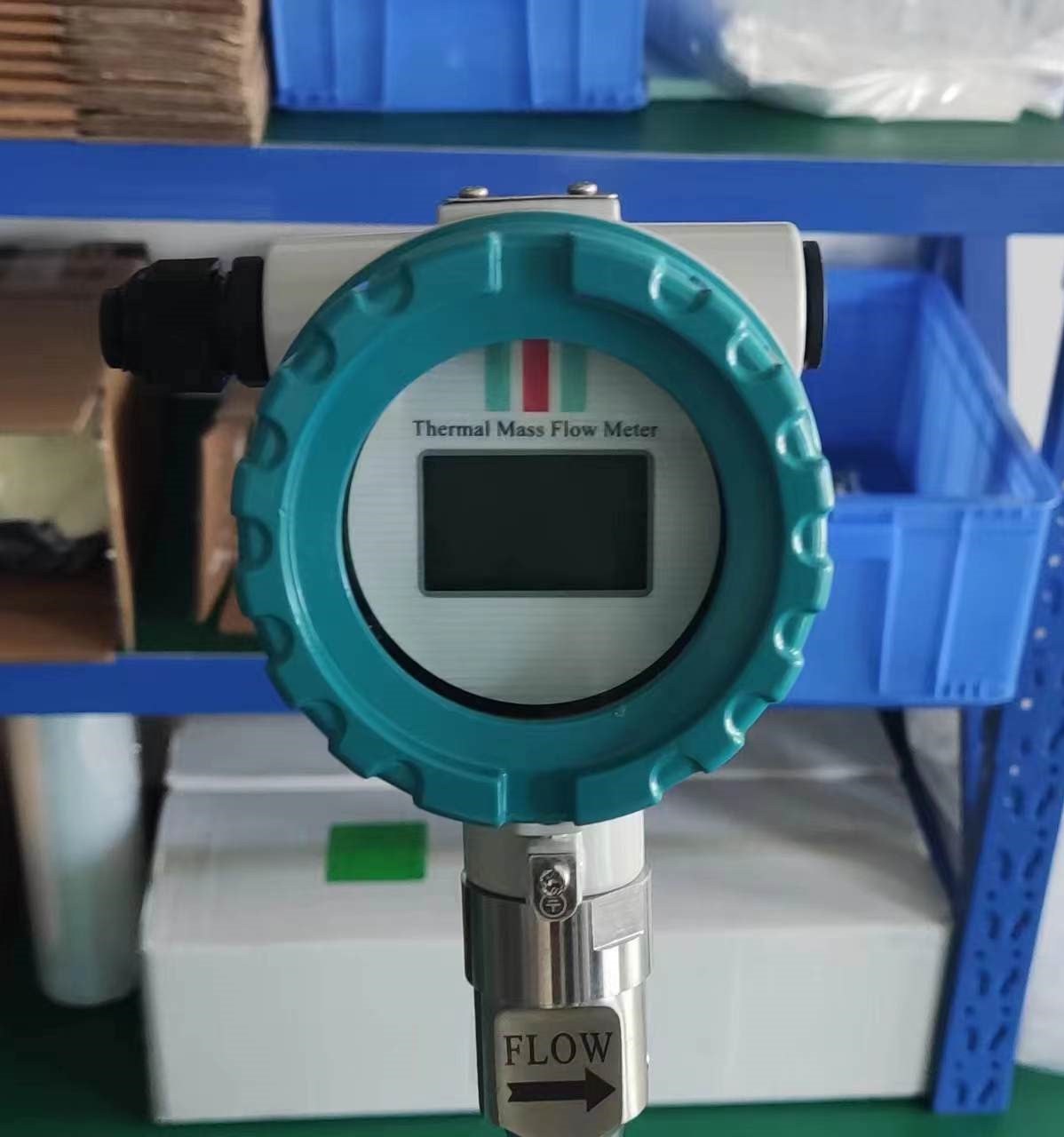304SUS Insertion Type Thermal Mass Gas Flow Meter for Compressed Air or LPG Gas Mass Flow Meter
Thermal mass flowmeters are known for their ability to provide accurate and reliable measurements of fluid flow rates, regardless of changes in pressure and temperature. This resilience to pressure and temperature variations is due to the operating principle of thermal mass flowmeters and their design features. Here’s why thermal mass flowmeters are not significantly affected by changes in pressure and temperature:
Operating Principle: Thermal mass flowmeters measure flow rates by utilizing the principle of convective heat transfer. They typically consist of a heated sensor and a temperature sensor. The heated sensor is maintained at a constant temperature higher than the fluid temperature. As fluid flows past the sensor, it absorbs heat, and the temperature sensor measures the temperature change. The amount of heat absorbed is directly proportional to the mass flow rate of the fluid.
Mass Flow Measurement: Unlike volumetric flow measurement devices, such as orifice plates or venturi meters, thermal mass flowmeters measure mass flow directly. Mass flow is independent of changes in pressure and temperature, as it represents the actual mass of the fluid passing through the flowmeter per unit time. This makes thermal mass flowmeters inherently insensitive to variations in fluid properties caused by changes in pressure and temperature.
Compensation Algorithms: Advanced thermal mass flowmeters incorporate compensation algorithms to account for changes in pressure and temperature. These algorithms adjust the measured temperature difference between the heated sensor and the temperature sensor to compensate for variations in fluid properties. By dynamically adjusting the thermal sensor’s characteristics, the flowmeter maintains accuracy across a wide range of operating conditions.
Sensor Design: Thermal mass flowmeters are designed with robust sensor elements and materials that can withstand a range of pressures and temperatures. The sensor design ensures stable and consistent performance even in harsh operating environments.
Calibration and Validation: Thermal mass flowmeters are calibrated under various operating conditions to ensure accurate measurement across the specified range of pressures and temperatures. Calibration curves and correction factors are used to adjust the flowmeter’s output based on the operating conditions.
Minimal Pressure Drop: Thermal mass flowmeters typically have a low pressure drop across the sensor element, minimizing the impact of pressure variations on the flow measurement.
Overall, the combination of operating principles, compensation algorithms, robust sensor design, and calibration procedures enables thermal mass flowmeters to maintain accurate and reliable measurement of flow rates, unaffected by changes in pressure and temperature within their specified operating range. However, it’s important to note that extreme variations in pressure and temperature beyond the flowmeter’s design limits may still affect its performance.

